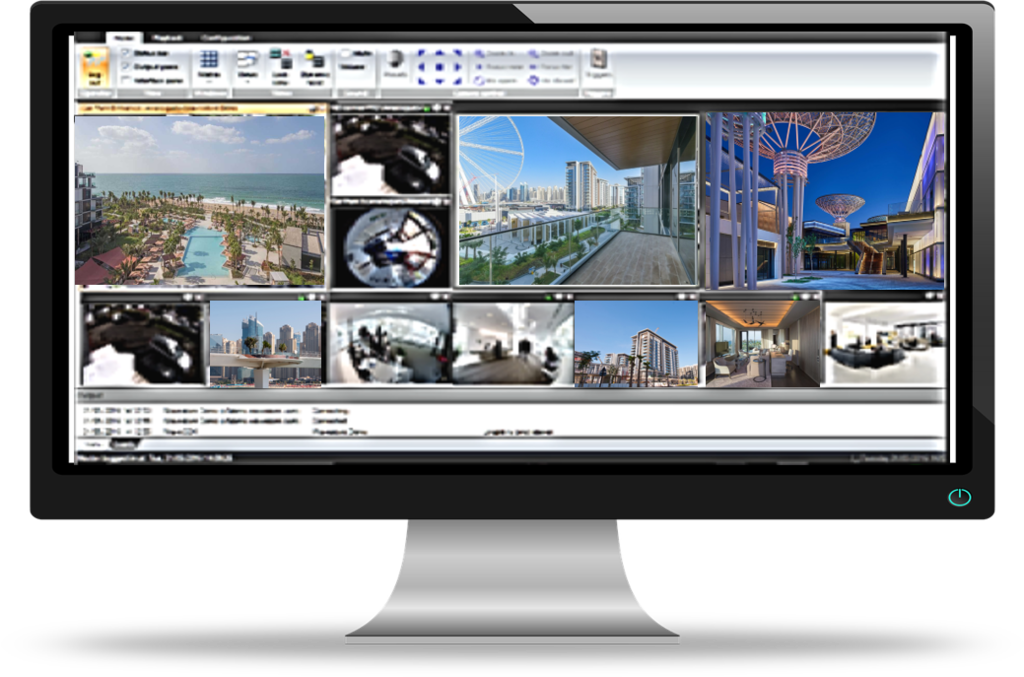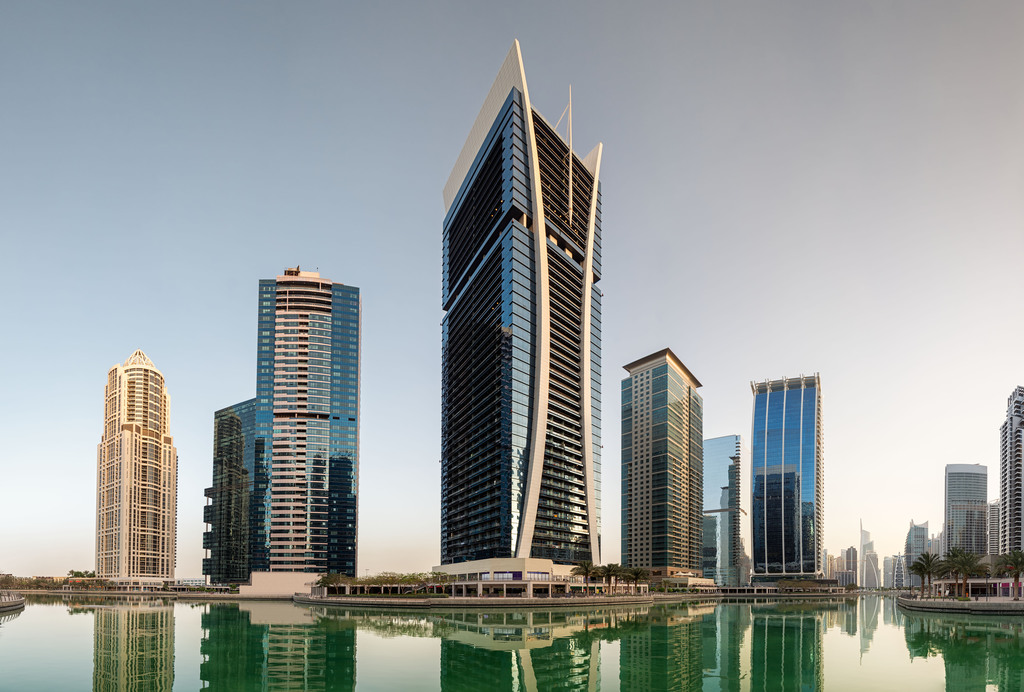
Brian Sims
Editor

Brian Sims
Editor
An exciting new wave of integration projects is showing that organisations no longer have to spend big if they want the advantages seamless systems performance.
GUESTS AT the Taj Exotica Resort & Spa on Palm Jumeirah - one of Dubai’s newest hotels - will soon be enjoying more efficient and memorable service thanks to state-of-the-art integration that will tie together front-of-house and back-of-house operations.
This integration-in-depth has been achieved at a much lower cost than traditional, custom-built Physical Security Information Management (PSIM) solutions and yet it is expected to deliver just as many benefits, if not more.
It’s just one example of the recent wave of affordable but still comprehensive integration applications.
These advances are not just linking surveillance, access control and other security systems, but tying-together complete business functions so that they can be monitored and controlled under a single operating umbrella.
In the case of the Taj Exotica it has been achieved using eFusion technology from Maxxess, which now integrates more than 60 technologies. The same solution is being deployed at other hotels in Dubai and London.
The benefits for guests will include a smoother check-in experience - with reduced queuing and no paperwork on arrival - and a higher level of service throughout their stay.
This fast-developing technology is attracting interest in the hospitality sector. For example, budget hotels or those catering mainly for business travellers, are looking to introduce a higher level of automation.
There is an advantage for them in allowing guests to go straight to their rooms on arrival, having been automatically checked-in via their smartphones, without needing to stop at reception.
During their stay, the same technology can give guests access to all the hotel’s services, from laundry to room service, again without having to phone down to reception. This facility is attractive to up-market hotels too, and for them it can be applied to an even wider choice of services.
At the new Bluewaters Island development In Dubai, the luxury Caesar’s Palace hotels, retail outlets and construction areas, still under development, are also benefitting from open architecture technology.
For hotels, the staffing efficiency cost-benefits of linking front and back of house are obvious. Equally important is the potential to positively impact customer satisfaction, helping to attract and impress guests in a competitive market. And security can underpin everything much more effectively, with audit trails linked to door activity with cameras in public areas allowing incidents (or claims) to be easily and quickly investigated.
Smart and affordable
The same approach can give an advantage in other sectors too, say the pioneers who are developing these smarter but cheaper ways to link multiple systems together – from higher education and healthcare to banking and the wider corporate sector, where they are also being deployed.
While the idea of integration is nothing new, what marks these latest projects out is the way they are reducing complexity without adding greatly to costs, and doing so using open-architecture, non-proprietary technology.
That makes these emerging solutions easily scalable. And it makes tech upgrades relatively easy compared with custom-build PSIM systems.
For example, users can now link their preferred access control technology to all their other systems – with a huge choice of leading manufacturers - including video, fire, intruder alarms and various building controls, from lighting to lifts.
Everything can then be operated from a single interface, to give improved traceability of users and events.
In settings where the population of users continually changes, such as hotels or hospitals, this can make it less of a headache keeping control of who has access to which entrances and exits across the site.
Consider the opposite: without efficient integration even basic tasks such as updating authorisations, adding or removing users and running audits for investigations can be time consuming.
Instead, now these integration-in-depth solutions makes it easier to manage security, even across multiple sites points out Lee Copland, managing director EMEA, Maxxess.
“Without full integration, complexity will typically increase with the number of sites you need to control. With each additional site you have, the more your systems and staff will be put under stress.
“This makes it hard to implement common policies and procedures across all your dispersed locations. Another example where this applies is multiple-occupancy buildings. In all these situations upgrading or changing any of your systems – even something pretty simple – can seem a major challenge.”
Make life easier
This is where fully integrated solution can make life easier, getting different locations working together and following the same standards and procedures, however far apart they actually are.
If users want an organisation-wide upgrade to improve their threat-preparedness, that will be easier too. And having unified operating standards across multiple locations will improve provision for users moving between sites.
In an emergency, fully integrated solutions offer major situational awareness advantages, which is why customised PSIM emerged in the first place.
The more affordable new wave solutions can now offer the same benefits. So, for example, your video system working with your fire detection technology allows more rapid confirmation – or denial – of any alarm activation, letting the security controller choose between a soft evacuation, a full-scale evacuation, or any other preferred response such as dispersed mustering.
This makes it more likely that proportionate action will be taken during any incident and avoid either unnecessary disruption or – even worse – dangerous delay.
The risk of operator-error is reduced and accountability, with more data-rich audit trails, is improved.
On a strategic level, full threat-preparedness in any busy environment requires real-time intelligence and data filtering. You need to separate potential threats from background noise and this can be challenging, particularly if you’re trying to keep track of activity across multiple sites and different systems.
Integration-in-depth has the potential to make the job much easier, say advocates. It will unlock increased power from individual technology tools by getting them working together.
For example, it lets you define events of interest, such as a particular door being unlocked or an alarm system being set/unset – and allows an almost limitless combination of automated responses, as well as generating detailed transactional information for review and audit.
Looking to the future, these unified management platforms will make it easier for organisations to change and adapt, Lee Copland says.
“As technology infrastructure expands it’s usually harder to maintain or scale up. But with our new approach we can offer an upgrade route which includes all the main solutions in access control, video, fire, intruder and building controls. This means you can reduce infrastructure write-off, add new functions when you need to and extend the life of your system.”
For integrators this means it’s now much easier to combine old and new hardware, such as cameras, and to create a perfectly working hybrid solution rather than being forced to rip and replace every time you want to upgrade or extend your security.
Similarly, users no longer have to write-off expensive access control hardware, cards, readers and cabling when they upgrade under a seamless integrated solution.
For more information, visit www.maxxess-systems.com
[Box copy, application story:]
An improved experience
The Taj Exotica Resort & Spa on Palm Jumeirah, which is due to open later this year, comprises seventeen floors with 200-plus rooms and suites, along with recreational and dining facilities.
It will benefit from Maxxess eFusion integration, bringing multiple technologies together - as will the Taj Jumeirah Lake Towers, another upcoming development by the Indian Hotels Company.
In both applications eFusion allows rapid integration - off-the-shelf - with a wide choice of security, safety and business-critical technologies.
It provides an umbrella management system and allows the highest level of service efficiency by removing the need for operators to continually switch between systems.
The systems and IT integrator for the new-build project, PACC Information and Communication Technology LLC, says eFusion was specified because it met requirements for the most robust solution and one that would be easy to adapt going forward.
“Guest satisfaction is the hotel’s top priority and the eFusion system will let them focus their efforts on delivering it,” says PACC spokesman Shantanu Mukherjee.“Visitors to these new hotels will really notice the difference.”
At the Taj Exotica, eFusion will integrate the front of house system from ASSA ABLOY; the Honeywell Simplex fire system controls; the Honeywell Building Management System connected via a Bacnet gateway; and a combination of 403 Hanwa Wisenet IP internal and external cameras, installed by ISS CCTV and operated through SecureOS video management software (VMS).
The ASSA ABLOY VingCard access control system, securing almost 300 doors, will be managed from the eFusion platform alongside other key services due to be added, including the OTIS elevator controls.
eFusion will allow the hotel’s management to define events of interest – such a particular door being unlocked, or alarms being set or unset – and provide transactional information to improve security for guests, and accountability.The solution also enables centralised management of room safes, mini-bars and cupboards, and the control of all alarm transactions.
Cameras linked to door access will allow video pop-up to be triggered by pre-defined events, and operators will have complete PTZ control, playback and video functionality.
Using eFusion, off-the-shelf integration modules, ID badging and building management systems are also fully integrated, allowing easy operation and control of a wide range of functions including heating, ventilation and air conditioning.
A further 300 rooms are expected to be added to the Taj Exotica Resort & Spa system in a phase-two development scheduled for 2021.





329 Bracknell
Doncastle Road
Bracknell
RG12 8PE
UNITED KINGDOM
01344-440083